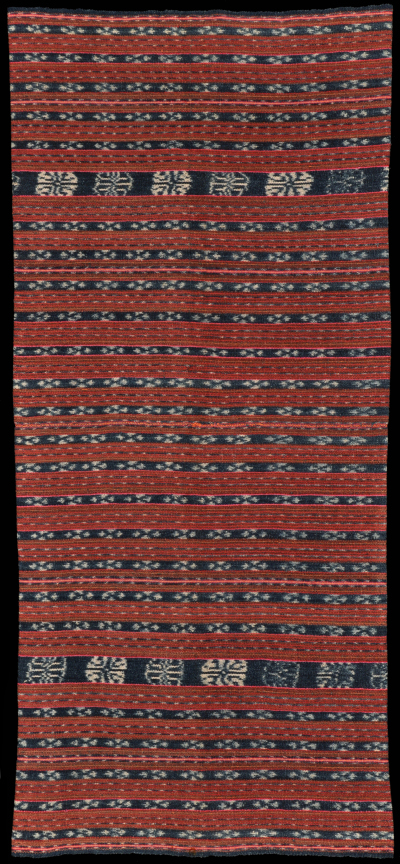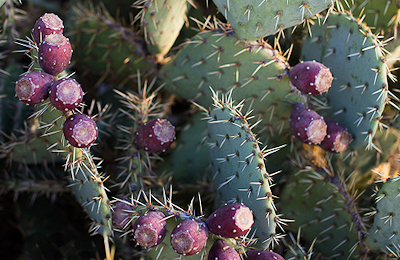| |
 
 | | | |
098 Solor Archipelago, Solor
Kewatek (sarong) 
| | Locale: | Village unknown. Lamaholot people. | | Period: | Circa 1940 | | Yarn: | Cotton, hand-spun, medium | | Technique: | Warp ikat | | Panels: | 2 | | Size: | 53 x 118 cm (1' 8" x 3' 10") LW: 2.23 | | Design: | Ikated bands in white on indigo with patola inspired, flower-like motif called satr, and numerous narrower bands with star-like motif, interspersed with narrow stripes in a red that most likely was created with a dye made from opuntia fruits ('prickly pear', see image below) or a mixture of morinda with opuntia dye. Note that while chochineal, a dye made from lice lving on opuntia cactuses has been known for many centuries, there is no record of the lice living in Indonesia. The dye is made from the fruits themselves, a practice also known from Mexico. Highlights were produced by very narrow stripes of commercial yarn in red, salmon, green and cyclamen, most only one thread wide. | | Comment: | Kewatek temodol biasa (see distinctions of Solor kewatek given by Hamilton), type of sarong that used to be made for daily wear. Hand spun indigenous cotton with the exception of a the narrow strands of highlighting in rayon or silk thread. Rare textile, clearly worn but in excellent condition, very good example of its type. | | Background: | Chapters on Solor Archipelago and Solor. | | Exhibited: | Museu do Oriente, Lisbon, 2014/15 | | Published: |
Woven Languages, 2014.
Ikat Textiles of the Indonesian Archipelago, 2018.
| | Compare: | 148 | | Sources: | Very similar to sarong with satr motif worn by Solor woman on photograph in Maxwell, Textiles of Southeast Asia, Fig. 70. See Hamilton, Gift of the Cotton Maiden, P. 179. Similar to example in Mingei Museum, acc. nr. 1992-19-130, but more richly decorated .Also similar to specimen from before 1893 in Leigh-Theissen & Mittersackschmöller's Textilien in Indonesien, Abb. 171, that is identified as 'Babar', though with the note that this provenance could not be confirmed by comparison with cognates. Information on the use of opuntia dye on Solor provided by Linda S. McIntosh.
 | | |

©Peter ten Hoopen, 2025
All rights reserved.
|
|


